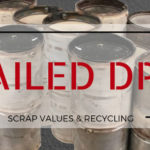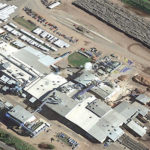For most heavy-duty truck and bus fleet operators, DPF cleaning has become a routine part of regular fleet maintenance. DPFs are unique in that they require periodic service, are prone to failure, and are expensive to replace.
With DPF cleaning comes a set of standard questions about the different procedures, what’s most effective, what’s least expensive and how do we minimize downtime?
This article will attempt to answer these common questions and give you a better understanding of DPF cleaning in 2017.
Why is DPF cleaning required?
A DPF physically traps and collects diesel soot and ash particles from diesel engine exhaust. While most of the trapped soot (organic matter) is burned off during periodic filter regeneration, metal oxide “ash” (inorganic matter) particles are not burned off. Ash is the inorganic material from lube oil and wear metals. It comes from the engine and is left behind after thermal filter regeneration. Over time, the unburned ash particles and soot will plug the filter unless the filter is periodically cleaned.
Read More






